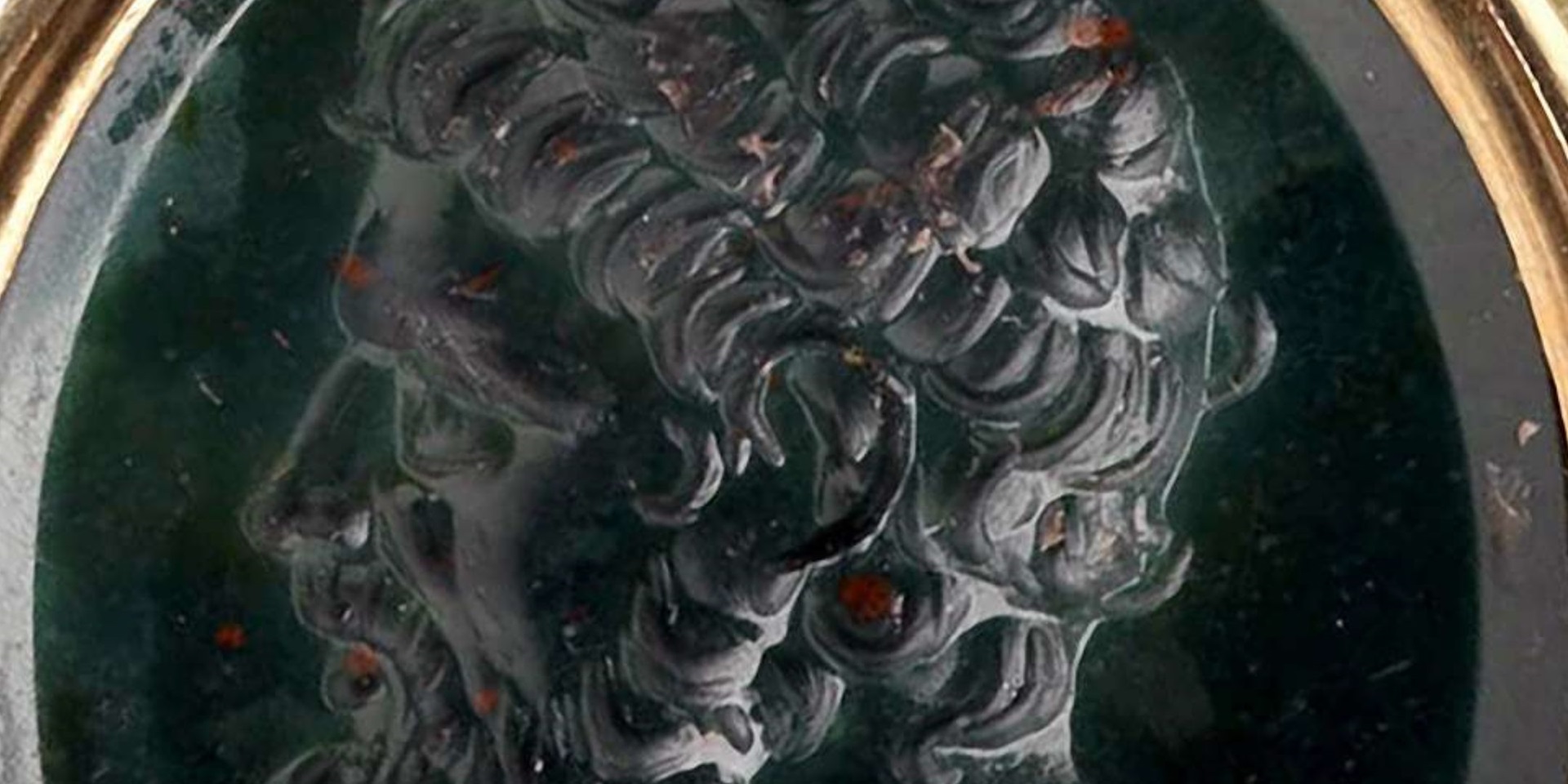
From William Bligh to George Suttor – an antique ring
‘May I ask of you to do us the favour to accept of this ring, and to feel assured that we most heartily desire that the best blessings may be vouchsafed with you and your family.’
Bligh's ring in its original case, ANMM collection
Sometime between 1839-1845 Frances (Fanny) Bligh, daughter of the renowned William Bligh, wrote this in a letter to a landholder in the colony of New South Wales named George Suttor. The ring Fanny was referring to was this intaglio bloodstone antique ring (00044369) which formerly belonged to her father. The ring was given to Suttor as a token of the family’s appreciation for the support he gave Bligh during the Court-Martial of Major George Johnston, and as ‘a memento of our grateful remembrance of you, your faithfulness and integrity.’
Although William Bligh is typically remembered as the Captain on board the mutinous Bounty in 1789, this ring is a reminder of Bligh’s involvement in the tempestuous period in Australian history that came to be known as the ‘Rum Rebellion’. In 1805, Bligh was appointed as the fourth Governor of New South Wales, arriving in Sydney in August 1806. His term was cut short however, by a rebellion of the New South Wales Corps on 26 January 1808. Under Major George Johnston, the New South Wales Corps marched to Government House and arrested Governor Bligh.
Many officers of the New South Wales Corps saw Bligh’s reforms (such as the introduction of laws restricting the use of rum as a currency; greater regulation of shipping; and prohibitions on the use of government-maintained labour on private farms) as threats to their profitable private ventures in the colony. Bligh was accused by Major Johnston of tyrannical behaviour threatening the stability of the young colony, and Johnston set up a provisional government pending authority from England.
George Suttor, who arrived in the colony as a free settler in November 1800, was a prominent supporter of Bligh throughout the rebellion. In 1810 when Bligh sailed for England, he took George Suttor as a witness in the Court-Martial of Major Johnston. Johnston was found guilty and dismissed from the army, while Bligh was promoted Rear Admiral.
Close-up of Bligh's ring, ANMM collection
George Suttor returned to Sydney in 1812 and by the 1820s had taken up land on the Bathurst Plains. He later lived in Elizabeth Street, Sydney. In 1839 he sailed for Europe with his wife and remained there for six years. During this time his wife died (1844) and Suttor returned to Sydney in November 1845. He died in 1859 and was buried at Kelso near Bathurst. In 1814 Bligh was made Vice Admiral of the Blue, died in December 1817, and was buried at St Mary’s Church, Lambeth.
The Australian National Maritime Museum holds a range of objects in its collection relating to William Bligh, one of the most controversial officers in the Royal Navy in the 18th and 19th centuries. If you would like to learn more about Bligh’s role in the ‘Rum Rebellion’, the infamous Bounty mutiny of 1789, or in Cook’s third voyage of exploration as Master of HMS Resolution, you can search our collection on-line.
